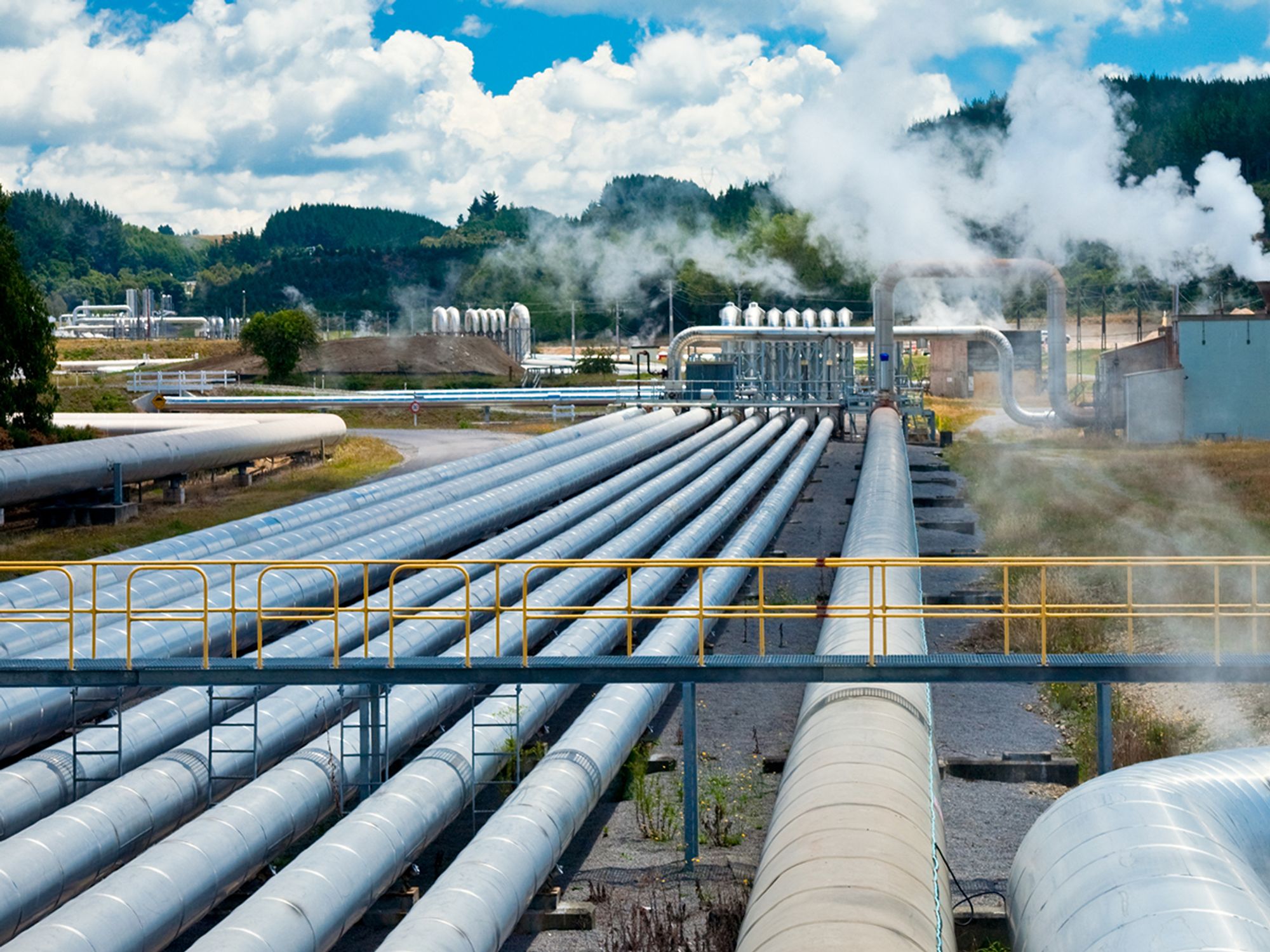Geothermal

- Three kinds of technologies utilize heat from the Earth: ground source heat pumps, direct-use geothermal, and deep and enhanced geothermal systems.
- Commercial uses of geothermal energy include food dehydration, gold excavating, and dairy pasteurizing.
Geothermal technology captures Earth’s heat. Only several feet below the surface, the Earth keeps a near-constant temperature, unlike the summer and winter temperature extremes of the air above ground. Even deeper below the surface, the temperature grows at an average rate of roughly 1°F for every 70 feet gained in depth. In certain areas, tectonic and volcanic activity can deliver greater temperatures and patches of superheated water way closer to the surface.
Three prominent kinds of technologies utilize Earth as a heat source:
- Ground source heat pumps,
- Direct-use geothermal, and
- Deep and enhanced geothermal systems.
Ground source heat pumps
A ground source heat pump uses the naturally existing variation between the air temperature above-ground and the soil temperature below the surface to transport heat to aid end uses such as space heating, air conditioning, and water heating. A ground source system has a heat pump tied to a sequence of buried pipes. The pipes can be installed in horizontal trenches just under the surface of the ground or in vertical boreholes that go a few hundred feet underground. The heat pump continually moves a heat-conveying fluid, occasionally water, through the pipes to transfer heat from one spot to another.
Direct-use geothermal
Direct-use geothermal systems utilize groundwater that is warmed by naturally occurring geological actions under the Earth’s surface. This water can reach temperatures as great as 200°F. Bodies of hot groundwater can be in numerous regions with volcanic or tectonic processes. In an area like Yellowstone National Park, groundwater reservoirs can go up to the surface, making geysers and hot springs. Hot water may be pumped from the surface or underground for a vast array of helpful applications.
Deep and enhanced geothermal systems
Deep geothermal systems utilize steam from way under the Earth’s surface for applications that need temperatures of a few hundred degrees Fahrenheit. These systems usually insert water into the ground through a single well and deliver water or steam to the surface through a different well. Other adaptations can gather steam right from underground. Dissimilar to ground source heat pumps or direct-use geothermal systems, deep geothermal systems can include drilling a mile or further under the Earth’s surface. At these great depths, high pressure holds the water in a liquid state despite temperatures reaching a few hundred degrees Fahrenheit.
Ground source heat pumps and direct-use geothermal technologies provide heating and cooling uses. Deep and enhanced geothermal technologies usually use a significantly deeper and greater temperature as a geothermal resource to make electricity.
Commercial uses of geothermal energy include the following:
- Food dehydration,
- Gold excavating, and
- Dairy pasteurizing.
